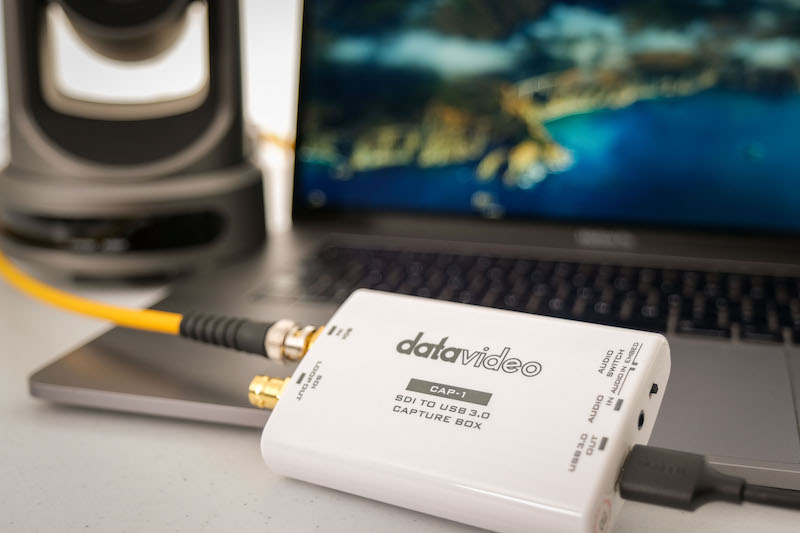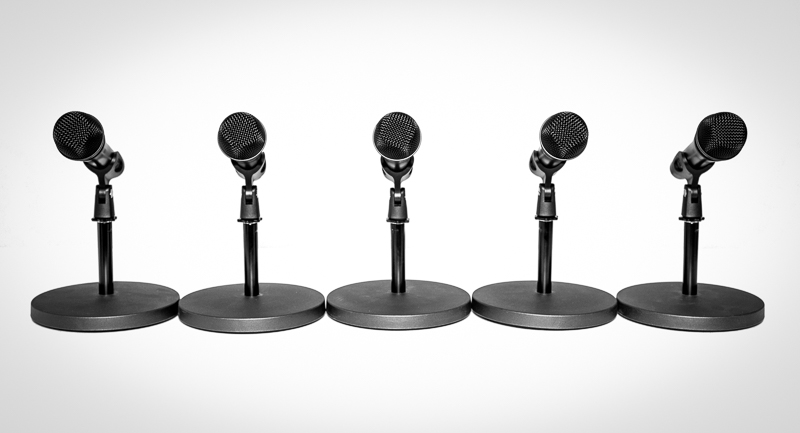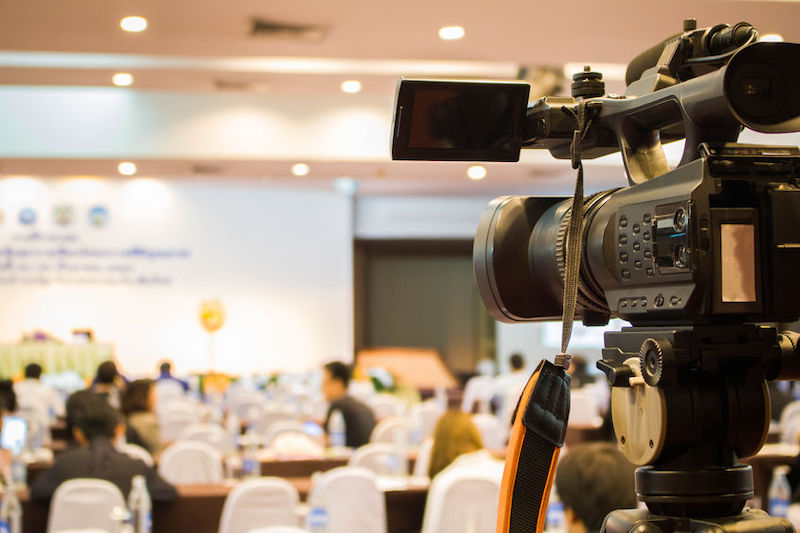For conference and seminar organisers, one of the biggest questions surrounding hybrid events, is how to engage online attendees. In essence, the solutions are fairly simple, and the tech involved is now very much tried and tested. Let’s take a look at how you can ensure that online attendees are fully engaged in your next hybrid event.
The Experience
The experiences given to in-person attendees at conference and training events have been honed over generations. We pay careful attention to the environment, presentations, hospitality, and just about every other aspect of our events. In fact, we regard the quality of experience at corporate events as a facet of their credibility.
However, as virtual and hybrid events continue to grow, organisers face a new challenge. They must now find ways of providing a credible experience for their online attendees as well as those attending in person. Let’s look at the major components of the online attendee experience to see where the challenges and solutions lie.
Video – Make sure you engage your online attendees visually.
Thanks to COVID-19 and the huge growth of services like Zoom, we all now get the video conferencing thing! But making the tech work for a hybrid event is rather more challenging than sitting in front of a laptop with a bookshelf behind you.
For a start, you need to make sure that the video going out to your Livestream is as high quality as possible. This means a dedicated camera, or cameras, with decent resolution and reasonable low-light performance. In addition, your camera will need good framing capabilities, i.e., optical zoom. Despite what manufacturers might have you believe, they’ve yet to provide device-mounted cameras that can do this job well. Run-of-the-mill USB webcams are also very unlikely to be up to the job.
In addition to the camera itself, you also need some way to get the video onto the internet. Depending on how you manage your outward Livestream, this could be a hardware streaming encoder or a USB video capture device of some kind. If you use a hardware encoder, this will give you direct access to your CDN’s server. If you go the USB route, you might then use host-based software, like Youtube Studio or Zoom, to get your video stream online. Alternatively, you might use a local app, like OBS, to go direct to your CDN’s server.

The Datavideo Cap-1 USB video capture device.
Learn about USB video capture.
Multi-camera production.
For a fully immersive online experience, you really should consider multi-camera video capture. This enables switching between a variety of angles and framing options for greater visual engagement. Imagine a TV program shot from a single static viewpoint, and you can quickly see the advantage of multi-camera production.
The systems used for multi-camera capture also enable us to display presenter slideshows online in very high quality. Video of keynote presentations can be punctuated with relevant slides. You might also want to use picture-in-picture technology or text overlays, which multicamera switching allows.
A well-managed multi-camera production will engage your online attendees so much more effectively than using a single static camera. In fact, multi-camera video often gives online viewers a better visual experience than that enjoyed by in-person attendees.
Learn more about multi-camera production.
Engaging your online attendees with crystal clear sound.
One of the most important considerations for a good online attendee experience is audio quality. Sound quality is often taken as a given, particularly at smaller events. This can lead to problems for in-person attendees, let alone those listening online. I’ve always thought this a little odd, considering that conferences, seminars, and so on are essentially spoken-word events.
Capturing clear, intelligible sound is a science in itself. However, one of the easier principles to understand is that the closer you are to a sound source, the louder and clearer it will be! This is because more direct sound is being picked up in relation to ambient sound (echoes from walls, etc). Having ‘general’ mics, to pick up the whole stage really doesn’t work. If someone is speaking, they need a dedicated mic in close proximity to them.
We’re used to seeing keynote speakers with a lectern mic or a wireless lavaliere mic. However, we often forget about the need for mics during discussions. Other contributors, both on and offstage, become very difficult to hear as a result. This is bad for those in the auditorium, but awful for those listening online.
In smaller spaces, in-person attendees may be able to hear every word acoustically, so a PA system won’t be necessary. However, your online attendees are a different matter. Relying on a single mic for the whole room is unlikely to give good results. On-camera mics or worse, microphones integrated into a camera, are notoriously bad for this.
It’s a good idea to have an array of mics available, particularly for Q&A panels. In addition, wireless mics, with runners should be available for audience questions. Otherwise, our online attendees may struggle to make sense of what is being said.

Capturing a panel discussion/Q&A requires multiple microphones.
Learn more about conference sound.
Engage online attendees in the conversation.
One of the biggest fears I hear in relation to hybrid events is that online attendees can’t contribute. This simply isn’t true, however. In fact, there are a number of ways that online attendees can engage directly in the in-house discussion.
Live chat
Even the most basic livestreams via YouTube and other video hosting services allow incoming questions via their live chat functions. During a live Q&A session, online attendees forward their questions as text, which presenters can respond to. Another alternative is to run an email account or phone number for taking text-based questions. Taking questions as text requires a moderator to select and voice questions to the live presenter/Q&A panel. It is however a very common way to handle Q&A in a hybrid event.
Video chat
Video conferencing services like Zoom and Microsoft Teams are built around the idea of two-way video. This means that taking video questions from online attendees is perfectly possible. The only additional action needed over a typical zoom style meeting is sharing the incoming video with your live audience. You can do this easily by switching inputs to your in-house projector/screen and sending the audio to your PA system. Some online attendees might not like the idea of appearing larger than life on a projector screen. However, there’s always the option of running text-based questions alongside incoming video.
Online polls
There are a number of ways to run a live online poll. Services like Zoom have these as an option and YouTube is currently rolling out a live chat poll function. Teams has the option of integrating a Microsoft Form into a Teams meeting for some very sophisticated questions.
You can take in-house polls with a simple show of hands. However, there’s absolutely no reason to exclude in-person attendees from taking part in online polls. You can easily use apps like Kahoot on any smartphone for polls. One of the advantages of including your live audience in online polls is that you can download and analyse data from your combined audience afterward.
Evaluation.
Its common practice to give out evaluation forms to in-person attendees as they can give us valuable feedback about our offer. In the same way, evaluation forms for online attendees can provide us with valuable information about their experience. The nice thing about online evaluation forms is that much of the information can be automatically collated. For this reason, you might even consider taking your entire evaluation process online. Google Forms, Microsoft Forms, and Survey Monkey are all excellent examples of easy-to-use, online tools for this purpose.
The future of hybrid events.
The recent COVID-19 pandemic added impetus to the trend for hybrid events. However, as normality returns, many event organisers continue taking advantage of the flexibility and reach that hybrid events offer. Its unlikely that even small conferences, training seminars, and similar gatherings will maintain exclusively in-person attendance for much longer. In short, hybrid events will definitely be part of the new normal!
As the hybrid trend continues to grow, event organisers will need to pay close attention to the needs of all their attendees, including those online. As already stated, the tech to give online attendees a rewarding experience is readily available and fully matured. All that’s necessary is for event organisers to take advantage of it.
Stourbridge-based Mooma Media offers event audio-visual support, event filming, live-streaming, video production, and still photography services to businesses, the public sector, and other non-commercial organisations throughout the Black Country and the wider West Midlands region. To discuss your project, or for a competitive quote click the button below.
Mooma Media provides hybrid event support in and near:
West Midlands county: Birmingham, Solihull, Sutton Coldfield, West Bromwich, Dudley, Walsall, Wolverhampton.
Staffordshire: Lichfield, Tamworth, Stafford, Cannock,Burton upon Trent.
Shropshire: Telford, Shrewsbury, Bridgnorth, Kidderminster, Ludlow.
Worcestershire: Bromsgrove, Reditch, Droitwich, Worcester,
Warwickshire: Warwick, Stratford upon Avon, Leamington Spa, Coventry, Nuneaton,


Comments are closed